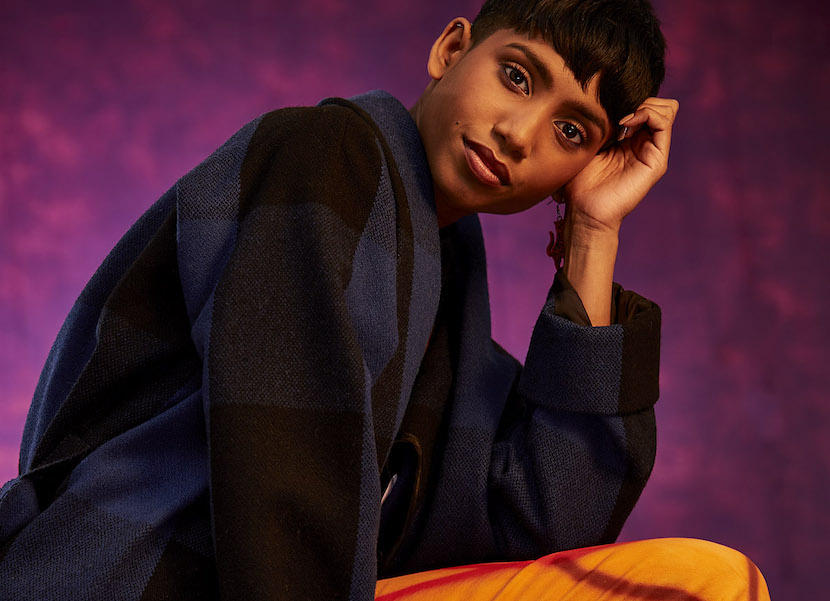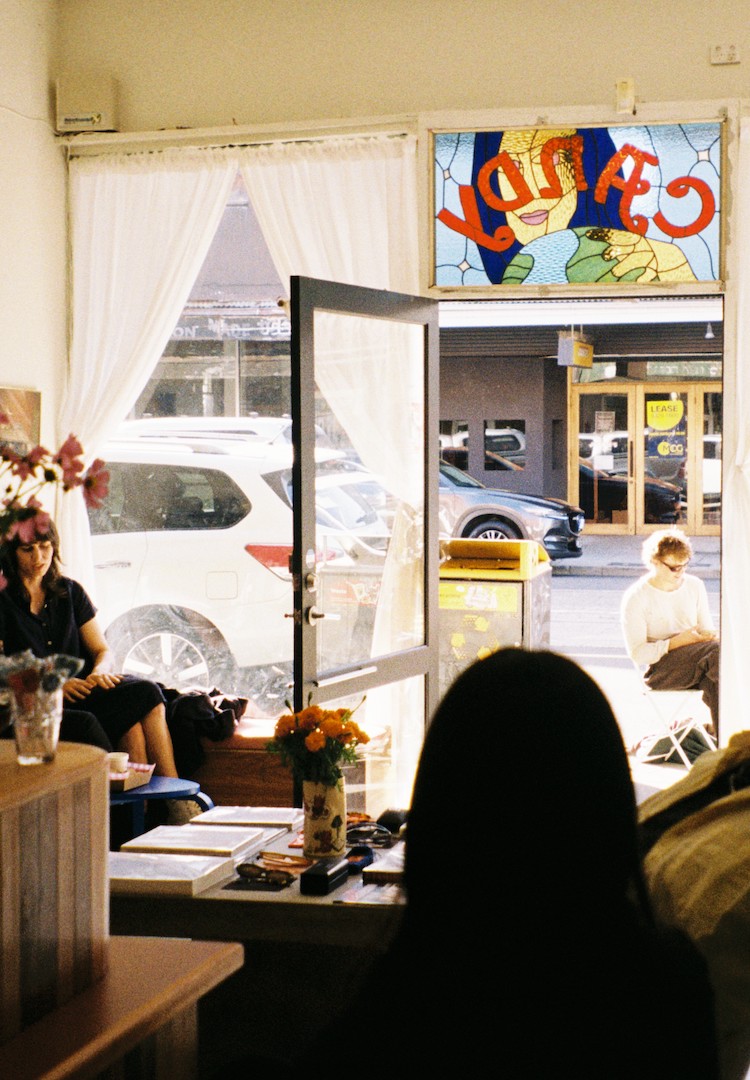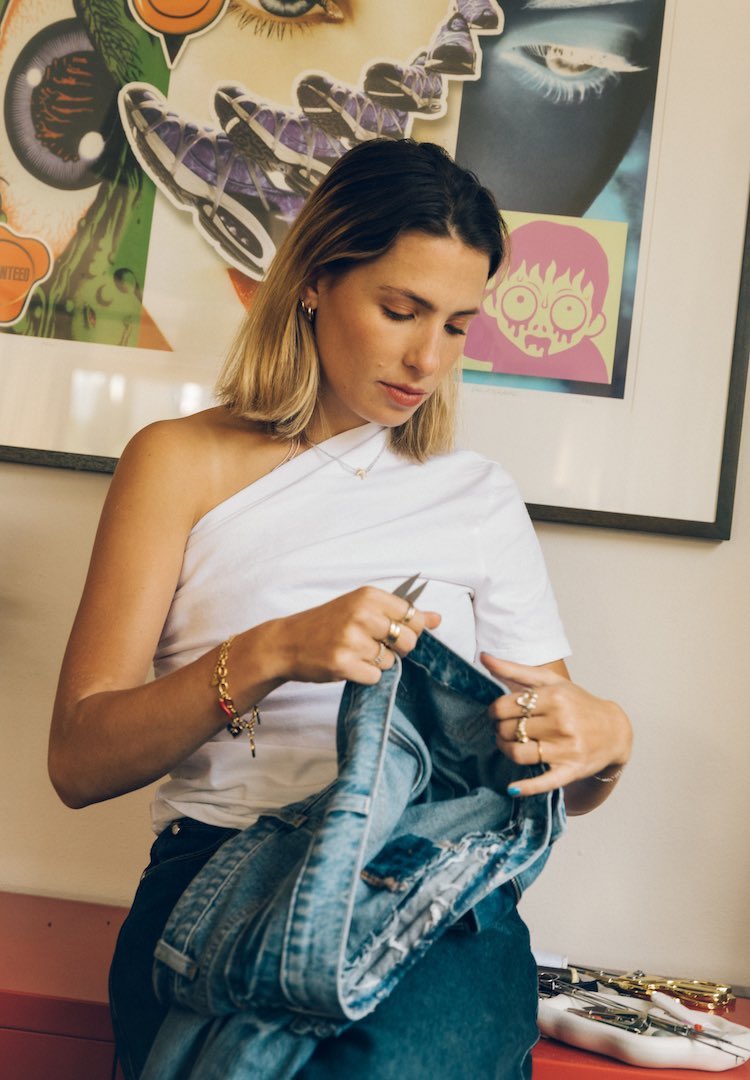I asked 7 Melbourne creatives how their practice has changed over the last two years
WORDS AND PHOTOGRAPHY BY ALICE HUTCHISON
“I’m in a complicated relationship with ‘the future’.”
In early 2022, I had just recovered from COVID-19 for the second time. As restrictions lifted, I found myself ruminating on what the word ‘freedom’ really means, two years into the pandemic. I decided to reach out to the creative community in Naarm (Melbourne) and began documenting other artists and creative practitioners through photographic portraits and interviews.
The idea was that in connecting with my community, my own experience would feel less unique, and would instead foster a sense of shared adversity and opportunity. The title of this photo series references the Cat Power album of the same name, released almost 20 years ago, and which I revisited last summer.
Interested to hear how others navigate the world? Head to our Life section.
This album, filled with confessional stories of adversity, depression and emancipation seems a fitting starting point for where we find ourselves post-lockdown. In this series, each portrait features a piece of fabric with the words ‘You are free’, painted by artist and interviewee Ajay Jennings.
In our conversations, each artist interprets this phrase differently. Some reflect on new and unusual forms of freedom brought about in the last two years. Some approach the idea of restrictions easing with optimism, while others fear what it could mean. And some speak to the idea of freedom more broadly: who it belongs to, and who it’s withheld from.
Each subject generously shares their experience of the past two years, and how it’s affected them and their practice. The result is a photo series that commemorates two years since the WHO officially declared the COVID-19 pandemic – an indelible era in our collective memory.
Billy Gibney, artist and designer
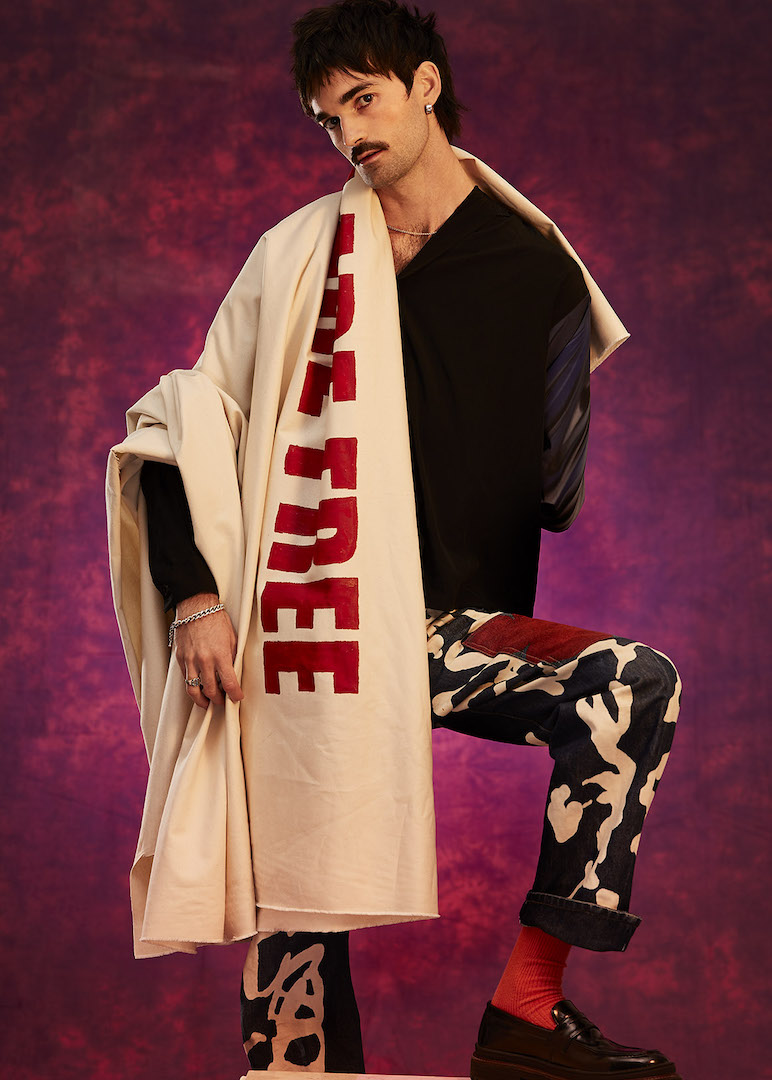
Tell us about yourself.
I’m a graphic designer turned oil painter.
How has the pandemic affected you and your practice?
I’ve worked as a graphic designer since 2015, and like many people I lost work in the pandemic, felt stressed and was overall disillusioned with spending most of my day on a screen. In an effort to do something creative with my hands, I began experimenting with painting tools. I started by painting things around the house or what I was eating, like a visual diary of sorts.
It became very natural to reach out to other artists during this time, which really helped with developing my skills. Two years later and I’ve painted almost every night since. I’ve been fortunate to have some amazing opportunities come my way and I’m about to start painting full-time. It all still feels a bit like a dream.
How do you feel about the future?
I’m in a complicated relationship with ‘the future’. I’ve always avoided thinking about it, and I understand it’s a privileged position that allows me to do that. But on a more personal level, I have a degenerative disorder that is likely to become physically debilitating. Things could deteriorate in a month or in 50 years, there’s really no telling.
For me, this has always been motivation to live each day and take more chances. It sounds so cliche, but that attitude has led me to take some amazing directions in life, like painting as a passion and career. It’s something I never would have guessed I’d be doing a few years ago and something that makes me excited for the future.
Shamita Siva, performing artist

Tell us about yourself.
I’m a performing artist and creative, mostly working in live performance, cabaret and theatre, but I also dabble in film. I’ve been dancing since I was four years old, and never really stopped performing after that. I did a BA in performing arts, studying physical theatre and dance practice, then furthered my acting training in LA. When I’m not performing, you’ll find me teaching dance, fitness and physical theatre to kids and adults.
How has the pandemic affected you and your practice?
The first lockdown was strange and novel – I was still creating in some way. The second was a haze of alcohol and other things. The third consisted of a lot of self-tapes and focusing on acting training, working out and attempting to learn German. I’m sure I had moments where I was grateful for the rest and reset, but that wore off pretty quickly somewhere between the second and third lockdowns.
Performing online made me realise how much I feed off the energy of live performance and the crowd in a room. For me, performing via live stream was soul-crushing – you finish your set and it’s absolute silence. It’s alien, strange and feels like a sentence without a full stop. That said, at times it was really lovely to have space for my brain to germinate and develop ideas. I’m so grateful financial assistance became available eventually though – so many creatives were facing a complete loss of income.
How do you feel about the future?
I’d like to say I feel hopeful. I’m one of those people who likes to find the good in everything. But I’ll admit that quality has been dashed – these days I approach new projects and gigs with caution, knowing that things could be cancelled at any moment. Things aren’t going to go back to the way they were anytime soon, so we just have to find our new version of ‘normal’.
Moksha Richards, artist
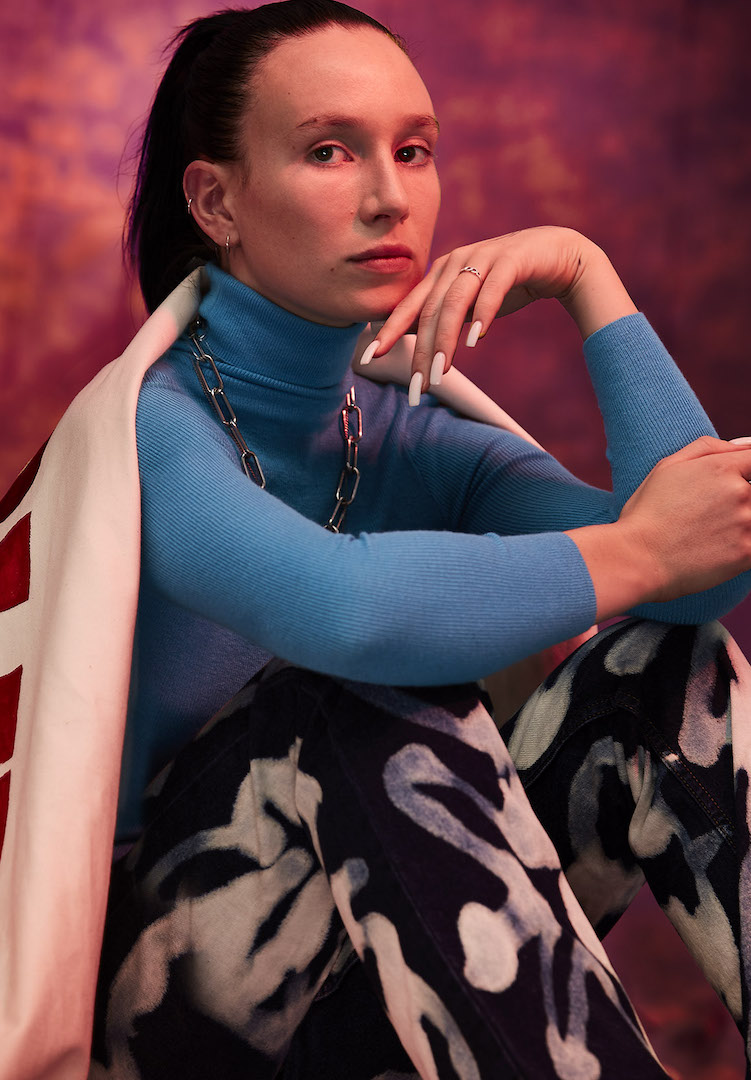
Tell us about yourself.
I was born in 1999 in the Byron Bay area, where I grew up among the bush and travelled often. Now I’m based in Melbourne/Naarm and studying my BA in fine art. I paint, mostly in acrylics on canvas. It’s predominantly abstract, flat and monotone with a lot of symbolism referencing history, science, ancient scripture, philosophy, spirituality, product logos and time.
How has the pandemic affected you and your practice?
For me, these last two years have been a wonderful and unexpected blessing. Of course, there were losses and significant sacrifices but nothing to override my gratitude for abundant government payments and a total focus on art. However, it was also in this lockdown that I was forced to undergo a phenomenal metamorphosis.
I consciously and actively worked to take responsibility for my state of being and my contribution to this earth, completely devoting myself to health and healing. I let go of my fear and taught myself to paint, screenprint and become proficient in Photoshop. It’s affected my practice entirely because my practice was effectively born through this pandemic.
How do you feel about the future?
I am so grateful to have had this time of quiet solitude, to develop my work and distil the direction I am heading in. I am so grateful for the opportunities I have received and each day I am excited by the choice to continue working, developing and learning both locally and internationally.
Tom Iansek, musician and producer

Tell us about yourself.
I’m a music artist and producer. I divide my time between my bands, Big Scary and #1Dads, as well as production work for others.
How has the pandemic affected you and your practice?
I initially had a major Australian tour cancelled, which was difficult, but I thankfully had many other things I could put my energy into. I adjusted to much more production work being done without artists there with me, which was liberating in some ways while also having its challenges.
I was grateful to have had work to continue with. When childcare closed, it felt like the pandemic truly caught up with me, as I took on full-time care of our toddler. While I cherished the time with my son, having to abandon my art for months with no end in sight certainly made for some dark days emotionally.
How do you feel about the future?
I feel optimistic for the future. The creative spirit is impossible to stamp out, and while the pandemic has dampened some aspects of our collective creative spirit, it has fuelled it in others. That’s what I love about our industry – people will always be compelled to reflect on where they are and create new work from it.
I never held any great concern for creativity in our city or elsewhere around the world. Aspects of the industry that have been suppressed, like live music, will joyfully spring back to life when the time is right.
Ajay Jennings, artist and fashion designer
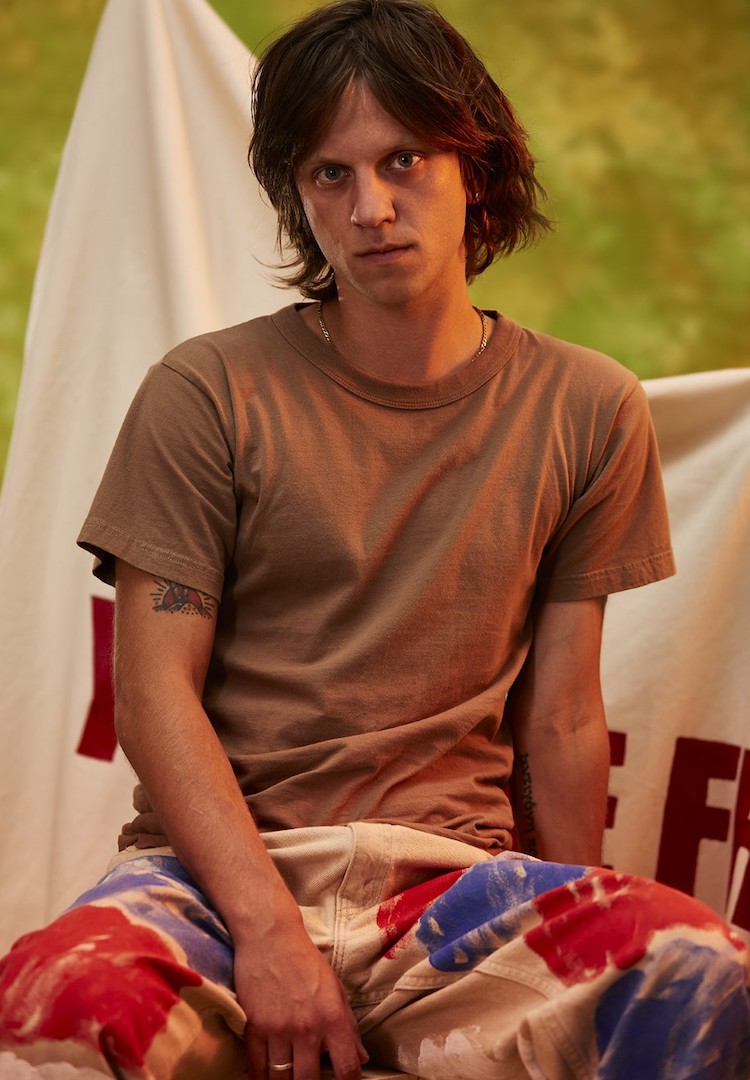
Tell us about yourself.
I am a multi-disciplinary artist whose collections of work draw inspiration from the Australian working class, pop culture, and the label of ‘style’. Spanning fashion design, creative direction and painting, I use an alluring combination of fabrics, paint, photos, and colour to tell fantastical stories, using my personal experiences as the main catalyst for their direction.
How has the pandemic affected you and your practice?
It’s had both positive and negative effects. On one hand, lockdowns afforded me huge blocks of time to work on my practice. However, my inspiration ebbed, flowed and ultimately waned as life became so banal without the social and communal aspects it once had.
How do you feel about the future?
Uncertain, yet optimistic. We humans are resilient, intelligent and sometimes wonderful creatures, and I believe that with perseverance and time the world will start to spin more steadily.
Amy Dellar, cinematographer
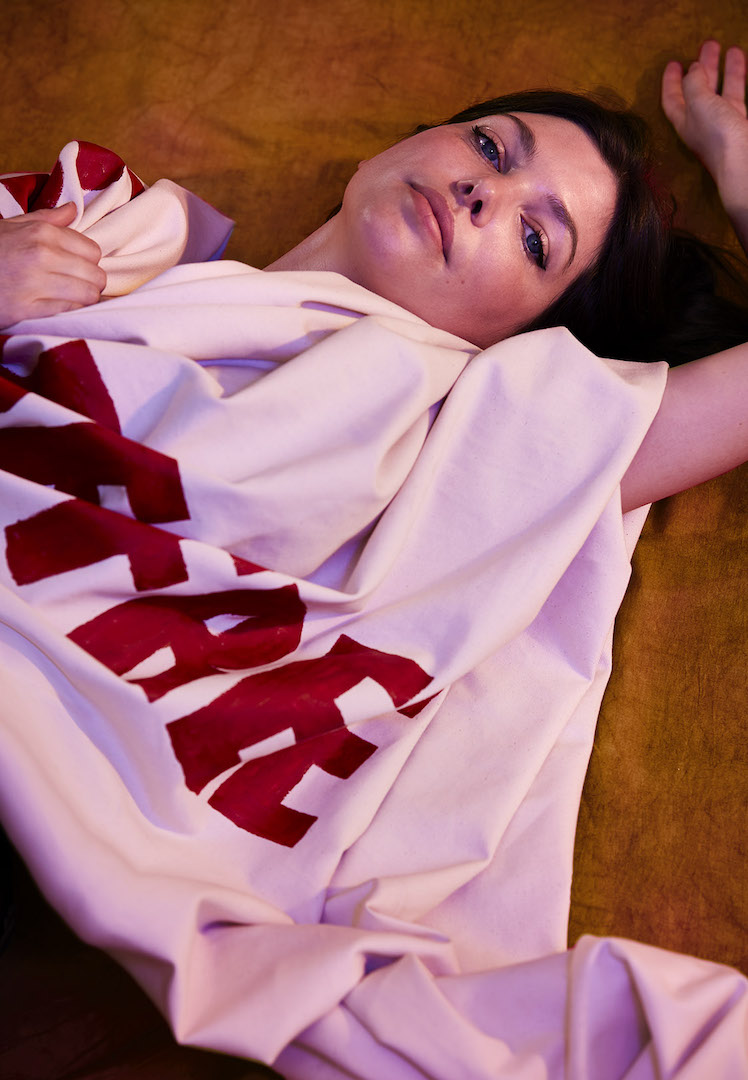
Tell us about yourself.
I’m a cinematographer, living my dream (as corny as that sounds!). Proving your worth, especially as a femme presenting female director of photography, can be challenging but that’s also what makes it so rewarding and exciting. I’ve always known that I wanted to be a cinematographer – it’s wholeheartedly my passion. I’ve shot three feature films, as well as countless short films, music videos and commercial content.
How has the pandemic affected you and your practice?
Like so many industries, the lockdowns largely halted the film industry, leaving many freelancers without work. Even though I wasn’t able to shoot, the fact that we were all in the same boat erased that ‘FOMO’ feeling and in a way was a welcome break.
Emotionally, the last lockdown was the most draining and taxing on my mental health. It definitely felt like the novelty had worn off. Even walking with friends seemed pointless and depressing at times. In a way, it turned me into more of an extrovert and ‘yes person’ post-lockdown, which I appreciate. I’m also grateful that I haven’t had to worry in the same way a lot of immunocompromised people have (and still do).
How do you feel about the future?
I’m a romantic, which I think comes through in my cinematography style. I feel intrigued and optimistic about the future. Regardless of whether that’s realistic or not, I’m feeling positive! I’m hopeful that the lockdowns are put behind us now and we have this wild time in our lives to talk about for decades to come.
Kee’ahn, singer-songwriter
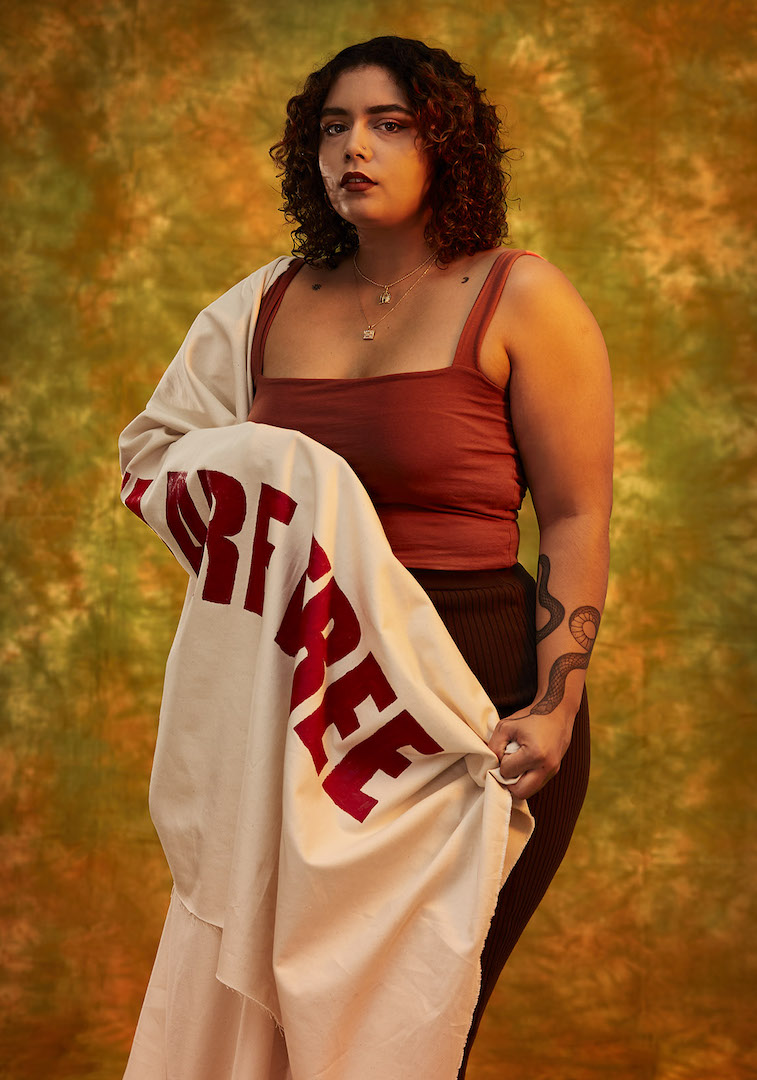
Tell us about yourself.
Yalada/Hello. I am a Kuku Yalanji, Jirrbal, Badulaig (Badu Island, Zenadth Kes/Torres Strait Islander). I am a queer singer-songwriter from North Queensland based in the Kulin Nations. My name Kee’ahn derives from kee’an, a word from the Wik people of Cape York, meaning ‘to dance and to play’. I write music influenced by soul, pop and folk genres, and speak on mental health, heartbreak and healing.
I am Blak, queer, and still here. My practice honours my matriarchal lineage of strong women who fought for me to be where I am today, which is what I shall do for future generations. A lot of my family’s voices were told to be quiet: singing for me is an act of defiance and a release. Through music, I have been privileged to connect with elders and blakfullas from many nations across so-called Australia. It’s been guiding, inspiring, beautiful and my main purpose in my career.
How has the pandemic affected you and your practice?
I, and my practice, really struggled in the lockdowns. Finding inspiration was difficult as I felt disconnected from Country, community and my close family, which affected my ability to connect to my purpose and work towards my practice.
However, I am grateful for the different opportunities there were to connect online to try and write music and even learn language – but it still wasn’t the most impactful for the spiritual and emotional aspects of my creative practice. I feel like I’m playing catch-up now, which I am grateful for.
How do you feel about the future?
I’m very nervous and worried about the future within this settler colony. The government has demonstrated consistently that their actions harm the majority, especially those who are most systemically oppressed. These few months with so-called personal liberties have felt for me as though I must choose between being able to pay rent and to live, or to risk community – frontline health workers, elders, immunocompromised people, and blakfullas in rural communities [are being] denied access to healthcare.
Blakfullas are still not truly free. We may be able to work in conditions that put us at risk within the colony but we need our people to be free from incarceration, and our lands back, to truly be free. Maya Angelou said, “The truth is, no one of us can be free until everybody is free”. Amid my nervousness and distrust of the government, I have a lot of hope and gratitude for Blak leaders and activists who have found ways to continue pushing for change and liberation. They are activists who have cared for community when the government continues to fail to do so.
All artists involved in this project acknowledge they are living and working on the stolen lands of the Wurundjeri people of the Kulin Nation.
For more about how the pandemic has impacted creatives, head here.






